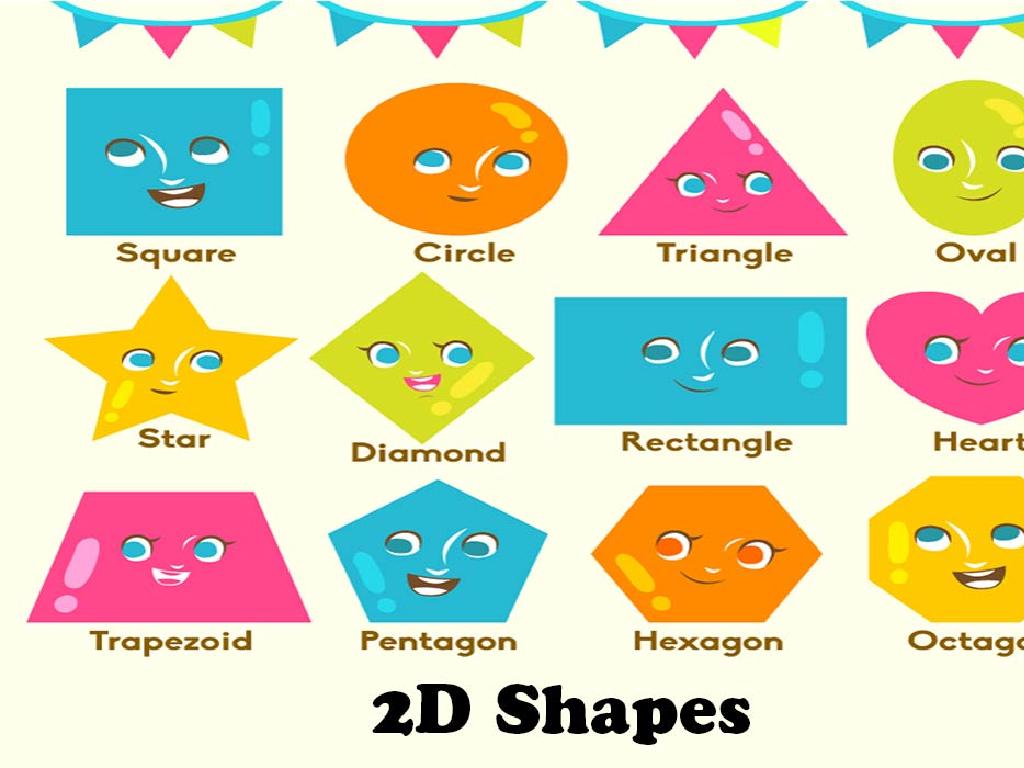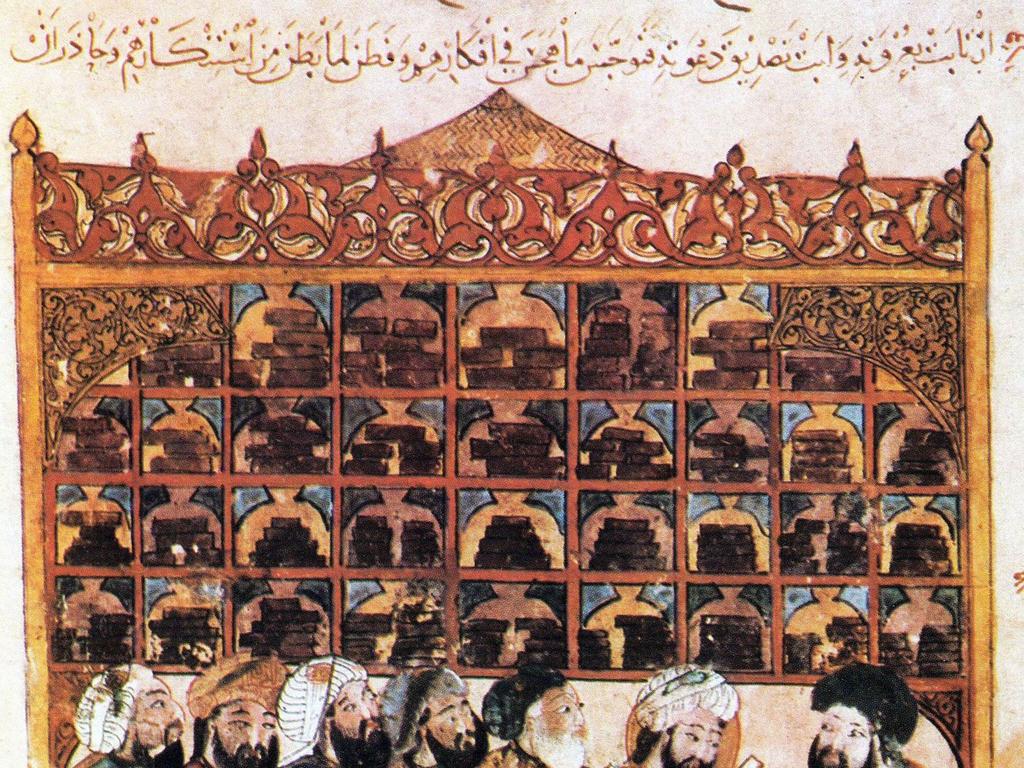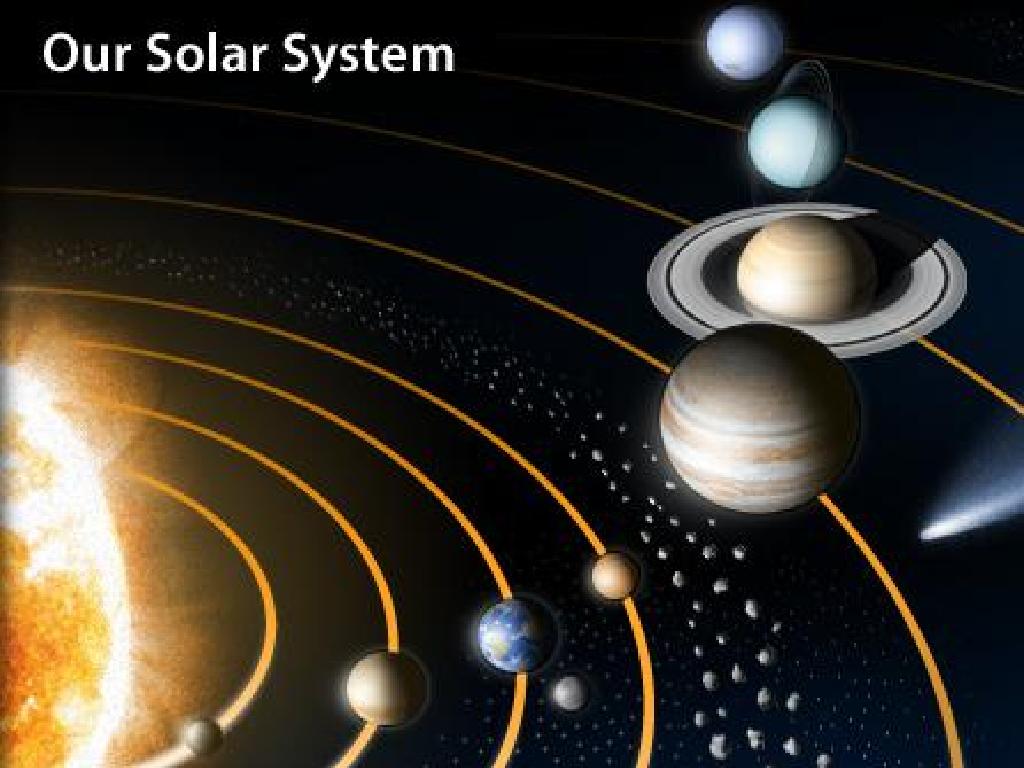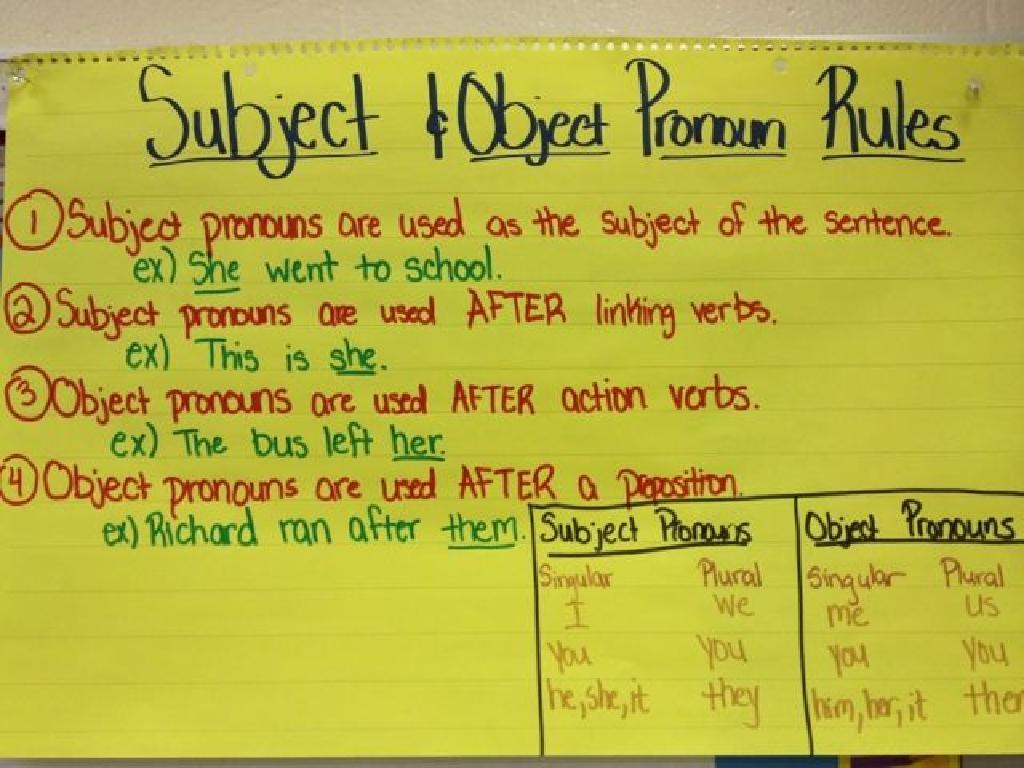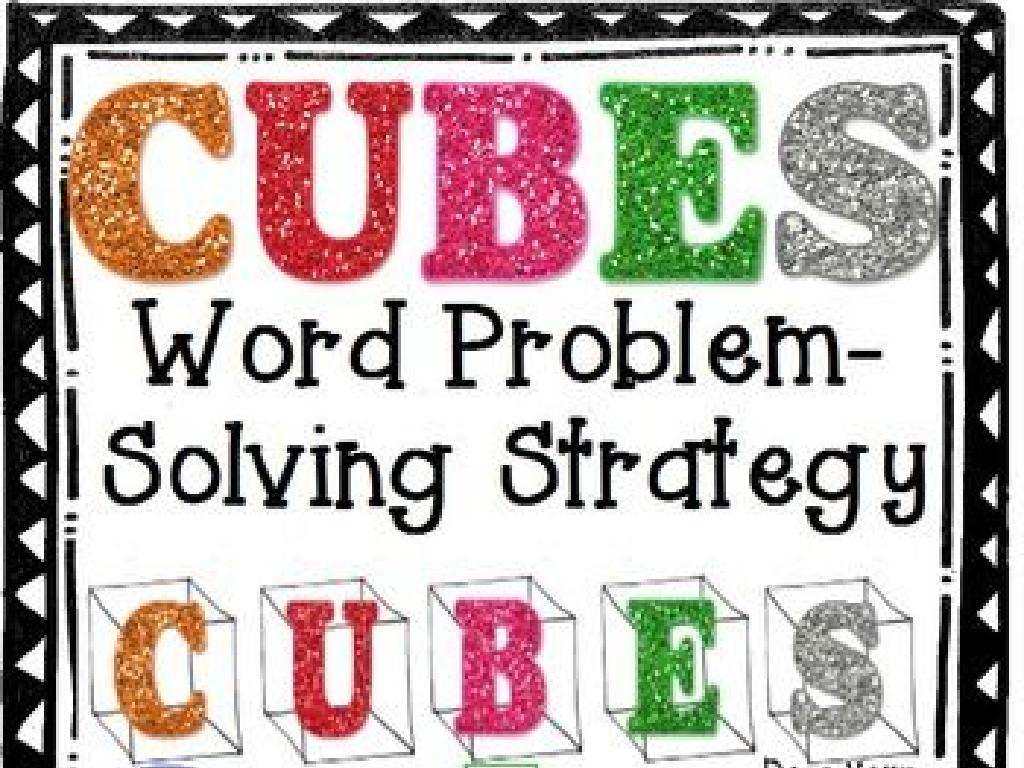Top, Middle, And Bottom
Subject: Math
Grade: Kindergarten
Topic: Positions
Please LOG IN to download the presentation. Access is available to registered users only.
View More Content
Exploring Positions: Top, Middle, Bottom
– Learn about Positions
– Discover ‘Top’
– ‘Top’ is like the highest shelf
– Find ‘Middle’
– ‘Middle’ is in between, like your belly button
– Identify ‘Bottom’
– ‘Bottom’ is like the floor where you stand
|
This slide introduces the concept of positions to Kindergarten students, focusing on ‘Top’, ‘Middle’, and ‘Bottom’. Start by explaining what positions are and how we can tell where things are in relation to other things. Use tangible examples like a shelf (for ‘Top’), their belly button (for ‘Middle’), and the floor (for ‘Bottom’) to make these concepts relatable. Prepare to engage the students with fun games that involve identifying objects in different positions in the classroom or in pictures. This will help solidify their understanding of the terms through active participation. The activities should be simple and interactive, such as placing objects in different positions and asking the children to identify them, or playing a Simon Says game involving the three positions.
Understanding Positions: Top, Middle, Bottom
– Positions show locations
– Describing places with positions
– Like where we sit in a circle
– ‘Top’ means highest point
– Example: Top shelf of a bookcase
– ‘Middle’ is in between, ‘Bottom’ is lowest
– Middle of a line, bottom of a basket
|
This slide introduces the concept of positions to Kindergarten students, helping them understand where things are located in relation to other objects. Positions are a basic spatial concept that allows children to describe and relate to their environment. Use everyday examples to illustrate the positions, such as objects in the classroom or playground. Encourage the students to think of their own examples of things that are at the top, in the middle, and at the bottom. This will help them grasp the concept of positions and how to use these terms to describe the location of objects.
Understanding Positions: The Top
– ‘Top’ means the highest point
– Imagine being on a slide
– The top of the slide is where we start
– Point to the top of your head
– Your head has a top too!
– Finding ‘top’ in the classroom
– Let’s find objects in the room and point to their top
|
This slide introduces the concept of ‘top’ to Kindergarten students. It’s important to use relatable examples like a slide in a playground, which they are likely familiar with, to explain that the top is the starting point before they slide down. Encourage the students to physically point to the top of their own head to connect the concept to themselves. Then, as an interactive classroom activity, ask the students to find various objects in the room and identify the top of each object. This will help solidify their understanding of the concept of ‘top’ through practical and tangible examples.
Understanding the Middle Position
– Middle means the center part
– Like the center of a sandwich
– Standing between two friends
– If you have a friend on each side, you’re in the middle!
– Finding the middle in our room
– We can use our classroom to find the middle together
|
This slide introduces the concept of the middle position to Kindergarten students. Begin by explaining that ‘middle’ refers to the center part of something, using simple examples like the middle layer of a sandwich. Then, relate the concept to their personal experiences, such as standing between two friends, to make it more relatable. Finally, engage the students in a practical activity by finding the middle of the classroom. This could involve having students stand in a line and identifying the middle student or using objects to visually demonstrate the concept. The goal is to ensure students can recognize and understand the middle position in various contexts.
Understanding the Bottom Position
– Bottom is the lowest place
– Like the floor beneath your feet
– Slide down to the bottom
– Think of going down a playground slide
– Touch your toes at the bottom
– When bending over, your fingers are at the bottom
|
This slide is aimed at teaching Kindergarten students about the concept of ‘bottom’ as a position. Start by explaining that the bottom is the lowest part of something, using the floor as an example. Demonstrate the concept by referring to a playground slide, which they are likely familiar with, and explain that when they slide down, they reach the bottom. Engage the students in a physical activity by asking them to touch their toes, helping them understand that their toes are at the bottom when they bend over. This kinesthetic approach helps reinforce the concept of ‘bottom’ in a fun and memorable way.
Let’s Practice Positions: Top, Middle, Bottom
– Look at pictures together
– Guess the position: top, middle, or bottom
– Is the bird at the top of the tree, or is the cat at the bottom?
– It’s a game – no wrong answers
– Encouragement to try your best
|
This slide is designed for a fun and interactive class activity to help Kindergarten students understand the concept of positions. Show a series of pictures to the class and ask them to identify whether certain objects are at the top, in the middle, or at the bottom. Reinforce that this is a game meant to encourage participation, not to stress about right or wrong answers. Provide positive feedback and encourage all attempts. Possible activities include identifying the position of a ball in a box, a bird in the sky, or a fish in the water. This will help students to visually associate objects with their positions and understand these basic spatial concepts.
Position Scavenger Hunt Activity
– Let’s explore positions in our room!
– Find objects at top, middle, bottom
– Look high, look around, look down
– Draw each object on your worksheet
– Use the worksheet to place your drawings
– Share your findings with the class
|
This class activity is designed to help Kindergarten students understand the concept of positions by engaging them in a fun and interactive scavenger hunt. The teacher will guide the students to find objects located at the top, middle, and bottom positions within the classroom. Students will then draw the objects on their worksheets according to where they found them. This hands-on activity not only reinforces the concept of positions but also encourages observation skills and creativity. After completing the scavenger hunt, students will have the opportunity to share their drawings and discuss the positions of the objects they found. The teacher should prepare a worksheet with designated areas for top, middle, and bottom drawings and provide assistance as needed during the activity.
Fantastic Work on Positions!
– Celebrating learning top, middle, bottom
– Understanding positions in space
– Positions help us tell where things are located
– Applauding everyone’s effort today
– Keep observing positions around you
– Notice positions at home, school, or in a book
|
This slide is meant to conclude the lesson on positions, specifically focusing on the concepts of top, middle, and bottom. It’s a celebration of the students’ understanding and effort throughout the lesson. Reinforce the importance of spatial awareness and how it helps us describe the location of objects in our environment. Encourage the children to continue observing and thinking about positions in different contexts, whether at home, in school, or while reading a book. This will help solidify their understanding and application of the concepts learned today. Praise their efforts and encourage them to keep practicing.

